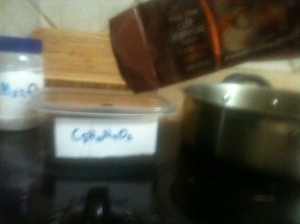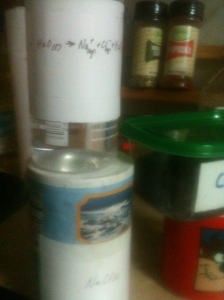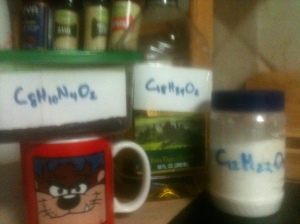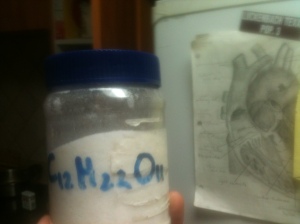Thursday, June 18, 2015
Sunday, May 17, 2015
Opening Up Open Access Beyond the Sciences: Learning from the Open Library of Humanities
Humanities and the Sciences
Opening Up Open Access Beyond the Sciences: Learning from the Open Library of Humanities
Dr. Caroline Edwards describes the origins, motivations, and strategies of the Open Library of Humanities:
“This site aims to give the background to, and rationale for, our vision of building a low cost, sustainable, Open Access future for the humanities.”
Tagged: Complexity, Digital Humanities, Open Access
Saturday, May 16, 2015
Collections Volunteering: The Stirling Smith Art Gallery and Museum
Humanities and the Sciences
Collections Volunteering: The Stirling Smith Art Gallery and Museum
“The Smith has for a number of years encouraged volunteering as part of our collections cataloguing and research efforts particularly for those interested in a career in the cultural sector. Volunteers are provided with a basic training in all aspects of curatorial work and set tasks, projects and lecturing opportunities, if time permits.” (Continued in Collections Volunteering.)
Tagged: Mediation, Volunteering
Wednesday, May 13, 2015
Smashing the Gates of Academic Discourse: Part 1
Humanities and the Sciences
Smashing the Gates of Academic Discourse: Part 1
Originally posted on Do-It-Yourself Library Instruction:
Can you just show them the databases? This is a phrase I’ve heard a lot as an instruction librarian.
I’ve thought about it, and the answer is no. I cannot just show them the databases.
 Figure 1: An uncertain student encounters the magnitude of academic discourse through a library database.
Figure 1: An uncertain student encounters the magnitude of academic discourse through a library database.
I cannot “just” show them the databases because there are so many layers of destruction inherent in my process of pointing, clicking, and narrating. I am not demonstrating how students can find a scholarly article, I am demonstrating how profoundly students are marginalized from academic knowledge production. I am not identifying aspects of peer review, I am silencing all non-academic voices–including the students’. I am not modeling good search strategies, I am erasing myself as a teacher.
Databases embody the exclusionary nature of academic discourse. Students are on the outside, in search boxes, using natural language that the database most likely won’t…
View original 2,632 more words
Thursday, May 7, 2015
Wednesday, May 6, 2015
Musei Capitolini
Humanities and the Sciences
Musei Capitolini
Vieni a scoprire i protagonisti della storia e i più affascinanti simboli della città nel museo più antico al mondo.
(Come to find out the protagonists of history and the most fascinating symbols of the city in the museum oldest in the world.)
Tagged: Art, History, Italian Renaissance, Museums, Rome
Thursday, April 30, 2015
Caitlin Green: Thanet, Tanit and the Phoenicians: Place-Names, Ar...
Tuesday, April 28, 2015
Sunday, April 26, 2015
“Wave Function” and more by Sixty Symbols (video) | on the importance of metaphors & metonymy in phenomenological modeling
Humanities and the Sciences
“Wave Function” and more by Sixty Symbols (video) | on the importance of metaphors & metonymy in phenomenological modeling
Saturday, April 25, 2015
“Wave Function” by Sixty Symbols (video) | on the importance of metaphors & metonymy in phenomenological modeling
Humanities and the Sciences
“Wave Function” by Sixty Symbols (video) | on the importance of metaphors & metonymy in phenomenological modeling
Friday, April 24, 2015
Speaker: Jeremy England, MIT: Statistical physics of self-replication
Humanities and the Sciences
Speaker: Jeremy England, MIT: Statistical physics of self-replication
What is life – lecture: A new theory for evolution. Speaker: Jeremy England, MIT.
“The formula, based on established physics, indicates that when a group of atoms is driven by an external source of energy (like the sun or chemical fuel) and surrounded by a heat bath (like the ocean or atmosphere), it will often gradually restructure itself in order to dissipate increasingly more energy. This could mean that under certain conditions, matter inexorably acquires the key physical attribute associated with life.” https://www.quantamagazine.org/20140122-a-new-physics-theory-of-life/
Tagged: Bertalanffy, Biology, Chem, Complexity, Data Visualization, Dispersion Mechanics, Jeremy England, MIT, Physics, Radiance Models, Systems Theory
Sunday, April 12, 2015
Depiction of Pico’s Oration in the film “The Gnostics” (excerpt)
Humanities and the Sciences
Depiction of Pico’s Oration in the film “The Gnostics” (excerpt)
Tagged: Documentaries, Hermetic Philosophy, Italian Renaissance, Oration Upon the Dignity of Man, Pico, Pico della Mirandola
Thursday, April 9, 2015
MICHELANGELO – THE GENIUS (Documentary)
Humanities and the Sciences
MICHELANGELO – THE GENIUS (Documentary)
Tagged: Architecture, Art, Christianity, Educational Video Production, History, Italian Renaissance, Lorenzo de' Medici, Painting, Sculpture
Wednesday, April 8, 2015
Temple Medicine, Oracles and the Making of Modernity: The Ancient Greek Occult in Anthropology and Psychology
Humanities and the Sciences
Temple Medicine, Oracles and the Making of Modernity: The Ancient Greek Occult in Anthropology and Psychology
Tuesday, April 7, 2015
Astro-confusion
Humanities and the Sciences
Astro-confusion
Important source for LIT, SEV, ICS and REN classes.
Originally posted on The Renaissance Mathematicus:
Dean Burnett is a neuro-scientist who has a blog on Guardian Science Blogs, Brain Flapping, that is usually fairly humorous and mostly satirical. However last week he decided to take a pot shot at astrology that was rather banal, displaying, as it does, Burnett’s total ignorance of astrology both past and present. Basic rule, if you wish to send something up successfully you should at least be well informed about that which you are trying to ridicule. As I am currently preparing a public lecture on the history of astrology[1], I was halfway tempted to let loose another of my diatribes about the significant role played by astrology not only in the history of science but also in the cultural, social and political histories of Europe in the last two thousand plus years but in the end I couldn’t be bothered. On that score you will have…
View original 706 more words
Monday, April 6, 2015
Designing beauty
Humanities and the Sciences
Designing beauty
Originally posted on British Museum blog:
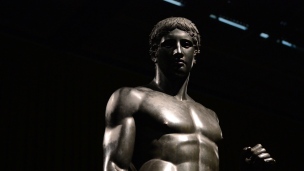 Caroline Ingham, Senior Designer: Exhibitions, British Museum
Caroline Ingham, Senior Designer: Exhibitions, British Museum
 Detail of a Bronze reconstruction of around 1920 by George Römer of the Doryphoros or ‘spear-bearer’ by Polykleitos, made around 440–430 BC. H 212 cm. Ludwig-Maximilians-Universität, Munich
Detail of a Bronze reconstruction of around 1920 by George Römer of the Doryphoros or ‘spear-bearer’ by Polykleitos, made around 440–430 BC. H 212 cm. Ludwig-Maximilians-Universität, Munich
Defining beauty: the body in ancient Greek art is the first major temporary exhibition of sculpture at the British Museum since Hadrian: Empire & Conflict in 2008. It is also the first sculpture show in the new Sainsbury Exhibitions Gallery (Room 30). For the Museum’s Exhibitions team this is the culmination of over a year of intensive work with the exhibition’s designers, Caruso St John architects and Matt Bigg, Surface 3 graphics.
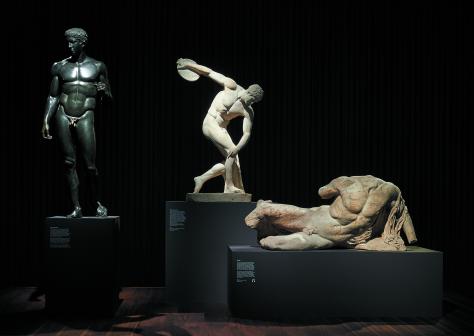 Sculptures on display in the exhibition, from left to right: Bronze reconstruction of around 1920 by George Römer of the Doryphoros or ‘spear-bearer’ by Polykleitos, made around 440–430 BC. H 212 cm. Ludwig-Maximilians-Universität, Munich. Marble statue of the Diskobolos or ‘discus-thrower’. Roman copy from 2nd…
Sculptures on display in the exhibition, from left to right: Bronze reconstruction of around 1920 by George Römer of the Doryphoros or ‘spear-bearer’ by Polykleitos, made around 440–430 BC. H 212 cm. Ludwig-Maximilians-Universität, Munich. Marble statue of the Diskobolos or ‘discus-thrower’. Roman copy from 2nd…
View original 536 more words
Tagged: Art, Biology, Cultural Studies (class), Sculpture
Sunday, April 5, 2015
The Great Experiment (Video) & observation notes
Humanities and the Sciences
The Great Experiment (Video) & observation notes
Prof. Michael Hunter speaks on the formation of the Royal Society. Video from RS Youtube channel. Useful for current Bacon research
:
06:56, Motto (declined) from Instauratio magna frontispiece.
12:20, frontispiece of Sprat’s history.
~13:50, echoing Bacon’s imperatives on mech arts & records of experiments.
16:23–16:56, 16:57–17:12, JACKPOT: temporal extensions insinuating that Bacon’s petition is realized, after a fashion; direct support feed into thesis statement.
17:12, last point extended to other august bodies; direct induction vs deduction reference along with rib at Cartesians’ armchair tendencies.
18:34, RS abandons overly ambitious, initial dabbling in proto systems science (or at least the GUT) and forms 8 committees for spec., yet this too gives way. All fascinating and applicable at a 2nd tier but not for paper (?) unless in paper conclusion this is addressed, espec. the cleaving unto the exotic in lieu of comprehensiveness [~19:00]
~23:00, adaptive functions begin to define value of appropriate corporate structure, “assess and adjudicate”
~25:35, solidifying role in “accreditation and demarcation,” example of German savant Eckard Lieichner (?) : link to Bac. sep. of Relig. & Sci, cf. Rossi chapt. Sci, Mag. & Mecharts
~27:00 back to solidif. of arenas of domain; central importance of conventional def. of science arising therefrom.
27:15 thus excluding magic; div. in mem. interests.; further points of interest.
Tagged: Bacon, Hooke, Lord Verulam, Michael Hunter, Royal Society
Saturday, April 4, 2015
“How to learn a new language: 7 secrets from TED Translators” (2014)
Humanities and the Sciences:
“How to learn a new language: 7 secrets from TED Translators” (2014)
Invaluable pointers from Krystian Aparta on the TEDblog (2014) on learning a new language:
blog.ted.com/how-to-learn-a-new-language-7-secrets-from-ted-translators/
Personal reflection: #3 works well for Chemistry too!
Tagged: Art, Chem, Data Visualization, Learning and Memory, Linguistics, mnemonic devices
Friday, April 3, 2015
Vasari’s Lives of the Artists, BBC Radio 4 Broadcast
Humanities and the Sciences:
Vasari’s Lives of the Artists, BBC Radio 4 Broadcast
http://www.bbc.co.uk/programmes/b00sg2y4
“Melvyn Bragg discusses ‘Lives of the Artists’ – the great biographer Giorgio Vasari’s study of Renaissance painters, sculptors and architects. In 1550 a little known Italian artist, Giorgio Vasari, published a revolutionary book entitled ‘Lives of the Most Excellent Italian Painters, Sculptors, and Architects, from Cimabue to Our Times’.” (Quote from BBC Radio 4, linked above)
Tagged: Art, Audio media, BBC, Cultural Studies, Italian Renaissance, Medicis
Thursday, April 2, 2015
Raphael – The Prince of Painters pt. I of II
Humanities and the Sciences:
Raphael – The Prince of Painters pt. I of II
Wednesday, April 1, 2015
The Bridges to Fermat’s Last Theorem – Numberphile
Humanities and the Sciences:
The Bridges to Fermat’s Last Theorem – Numberphile
Tuesday, March 31, 2015
Musei Capitolini
Humanities and the Sciences:
Musei Capitolini
Vieni a scoprire i protagonisti della storia e i più affascinanti simboli della città nel museo più antico al mondo.
(Come to find out the protagonists of history and the most fascinating symbols of the city in the museum oldest in the world.)
Tagged: Art, History, Italian Renaissance, Museums, Rome
Monday, March 30, 2015
Listening to classical music modulates genes that are responsible for brain functions
Humanities and the Sciences:
Listening to classical music modulates genes that are responsible for brain functions
